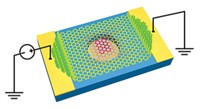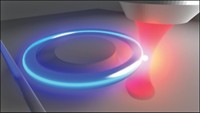Advertisement
Grab your lab coat. Let's get started
Welcome!
Welcome!
Create an account below to get 6 C&EN articles per month, receive newsletters and more - all free.
It seems this is your first time logging in online. Please enter the following information to continue.
As an ACS member you automatically get access to this site. All we need is few more details to create your reading experience.
Not you? Sign in with a different account.
Not you? Sign in with a different account.
ERROR 1
ERROR 1
ERROR 2
ERROR 2
ERROR 2
ERROR 2
ERROR 2
Password and Confirm password must match.
If you have an ACS member number, please enter it here so we can link this account to your membership. (optional)
ERROR 2
ACS values your privacy. By submitting your information, you are gaining access to C&EN and subscribing to our weekly newsletter. We use the information you provide to make your reading experience better, and we will never sell your data to third party members.
Synthesis
Weighing next to nothing
March 27, 2006
| A version of this story appeared in
Volume 84, Issue 13
In the never-ending quest to measure, analyze, tweak, and otherwise engage ever smaller amounts of stuff, Michael L. Roukes and his colleagues at Caltech have devised a nanoelectromechanical system device capable of "weighing" masses in the zeptogram (zg = 10-21 g) range (Nano Lett., published online March 15, dx.doi.org/10.1021/nl052134m). The device's sensing elements are diminutive beams of silicon carbide clamped on each end to larger SiC bases, which then integrate with the rest of the device's electronics. The beams, 150 nm wide and 2,300 nm long, are set to vibrate at multi-megahertz frequencies. When the researchers use a tiny nozzle to puff small plumes of xenon or nitrogen at the device, the beam's flexing frequency slows a tad, but enough that the researchers can detect masses as low as 7 zg, which corresponds to about 30 xenon atoms or individual peptides several tens of amino acids long. Among the potential applications for molecular-weighing devices like these are ultrasenstive detectors of chemical and biological warfare agents.





Join the conversation
Contact the reporter
Submit a Letter to the Editor for publication
Engage with us on Twitter